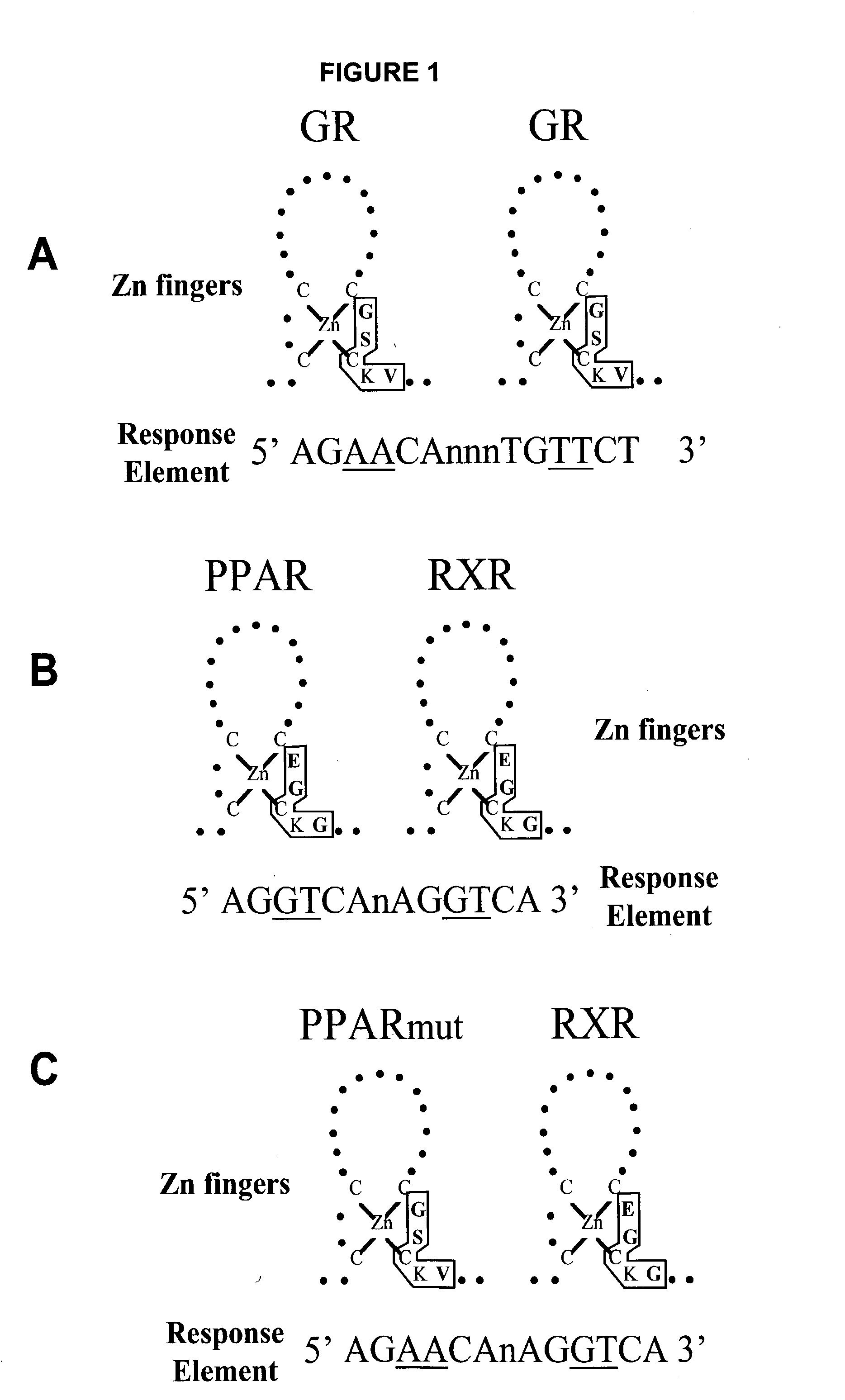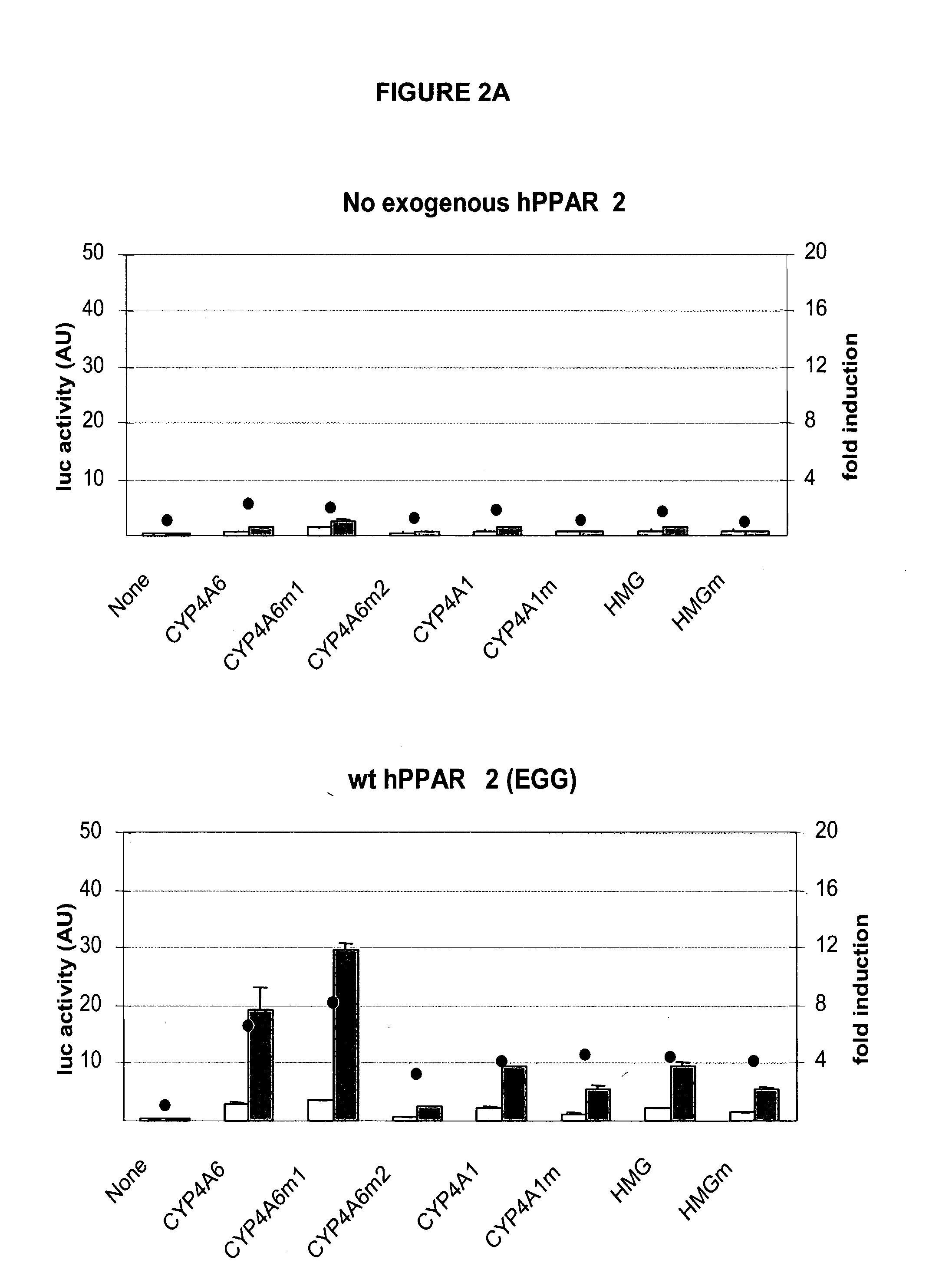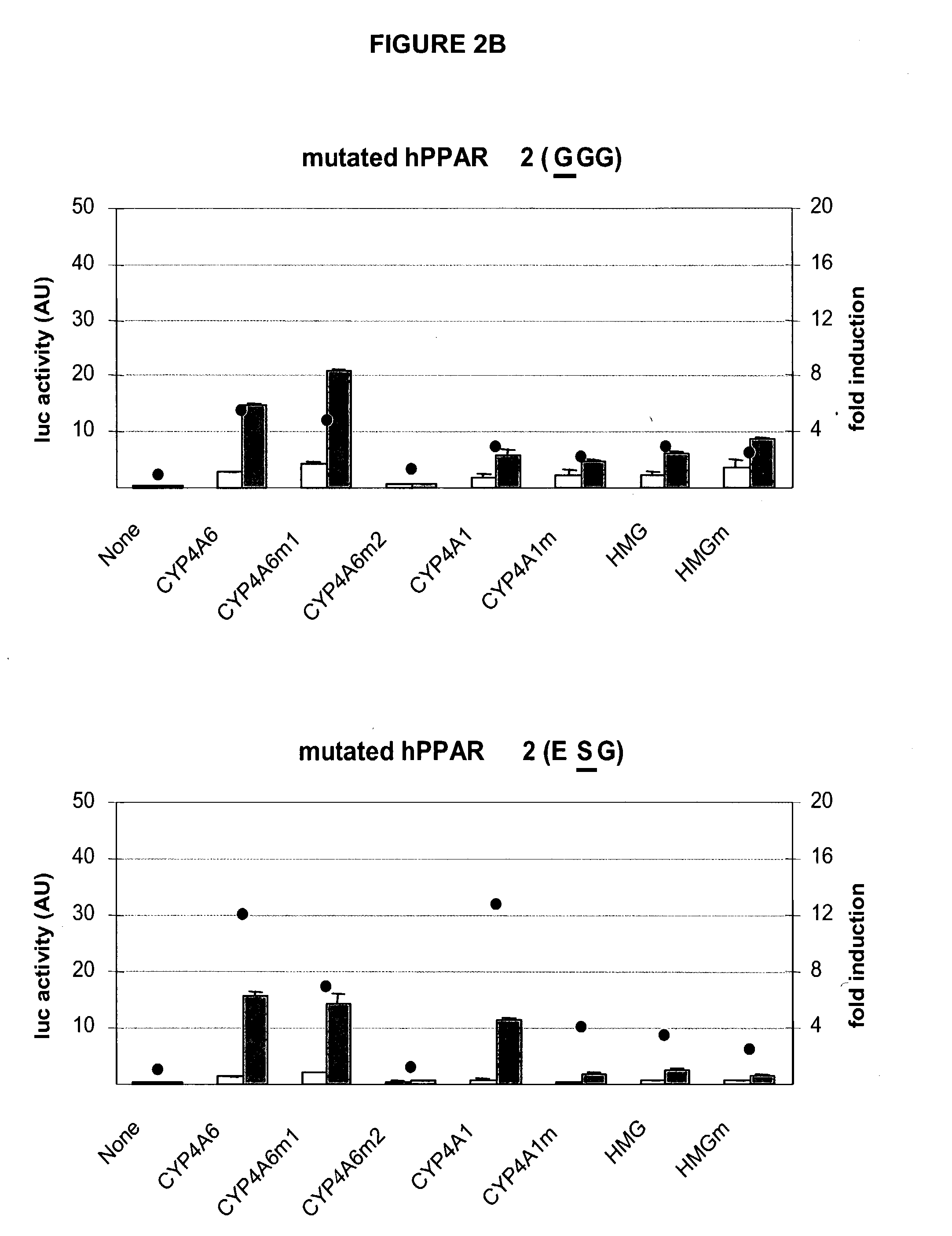Inducible expression systems employing PPAR transcriptional activators
a transcriptional activator and inducible expression technology, applied in the field of inducible expression systems employing ppar transcriptional activators, can solve the problems of inability to produce proteins in a recombinant expression system, inability to control expression levels adequately, use of proteins or compounds that affect the cell,
- Summary
- Abstract
- Description
- Claims
- Application Information
AI Technical Summary
Benefits of technology
Problems solved by technology
Method used
Image
Examples
example 1
Construction of Plasmids Bearing PPAR Polypeptide-Encoding Sequences
[0060] The plasmids pSG5 (Stratagene), pBluescript II SK+(Stratagene) and pSL301 (Invitrogen Corporation) are of commercial origin. The constructions of the expression plasmids pSG5-hPPAR.gamma.2 (Fajas L. et al., J. Biol. Chem., 272: 18779-18789 (1997)) and pSG5-hPPAR.alpha.(Koz) (Gervois P. et al., Mol. Endocrinol., 13: 400-409(1999)) have previously been described. Plasmid pSG5-hPPAR.gamma.2 (FIG. 7) was cut with Hind III and the 74 base-pair fragment encompassing the sequence encoding the P-box was replaced by annealed oligonucleotides of the same sequence except that one, two or three codons for the E, G, G residues of the P-box were mutated into codons for G, S, V residues (plasmids pMW39 to 44, FIG. 5). The modification of the P-box can also be applied to a recombinant transcriptional regulator comprising two copies of the ligand-binding domain hPPAR.gamma.2.gamma.2 (in WO 00 / 78986 and U.S. Prov. Application ...
example 2
Construction of Exemplary Response Elements
[0063] Numerous transcriptional control and regulatory elements exist in the art and can be selected for use and analysis. The invention is not limited to the use of any particular element or those specifically exemplified here. The nucleic acid encoding the plasmid pGL3-Basic, used for cloning the various promoter regions, as well as the plasmid pRL-null, are of commercial origin (Promega Corporation) and contain promoters that can be adapted for use. The plasmids encoding the reporter gene luciferase under the control of a minimal human CMV I / E promoter and PPRE were obtained by inserting annealed oligonucleotides encoding 3 PPRE (with a 21 nucleotide distance between PPRE centers) between the BglII and MluI sites of plasmid pRDA13. The consensus PPRE as well as PPRE identified in the promoter of 7 genes were studied: ApoAII, BIF, CYP4A1, CYP4A6, FABP, HMG, MEP (FIG. 6). Four versions of each PPRE-containing region were studied: PPRE in s...
example 3
Transfection or Infection of Cultured Cells
[0066] One skilled in the art is familiar with protocols for transfecting plasmids into cell or infecting cells with virus. As an example, murine myoblasts (C2C12; ATCC: CRL1772) and human HEK293 (ATCC: CRL1573) cells are seeded in 24-well plates (7.5.times.10.sup.4 cells per well) and grown for 24 h in DMEM supplemented with 10% FCS. Cells are washed in DMEM without serum and transfected in triplicate by adding to the cells 0.5 ml of OptiMEM mixed with various quantities of reporter gene (AP or luc) encoding plasmid, supplemented to 500 ng with a carrier plasmid and LipofectAMINE (2 .mu.l for C2C12, 3 .mu.l for HEK293). Five hours later, the medium containing the DNA and the LipofectAMINE is replaced by 1 ml of DMEM supplemented with FCS (2% for C2C12, 10% for HEK293). Aliquots of the culture medium are collected 2 days post-transfection and can be frozen at -70.degree. C. for storage. The cells are rinsed twice with PBS, incubated with 10...
PUM
| Property | Measurement | Unit |
|---|---|---|
| concentration | aaaaa | aaaaa |
| pH | aaaaa | aaaaa |
| alkaline phosphatase activity | aaaaa | aaaaa |
Abstract
Description
Claims
Application Information
 Login to View More
Login to View More - R&D
- Intellectual Property
- Life Sciences
- Materials
- Tech Scout
- Unparalleled Data Quality
- Higher Quality Content
- 60% Fewer Hallucinations
Browse by: Latest US Patents, China's latest patents, Technical Efficacy Thesaurus, Application Domain, Technology Topic, Popular Technical Reports.
© 2025 PatSnap. All rights reserved.Legal|Privacy policy|Modern Slavery Act Transparency Statement|Sitemap|About US| Contact US: help@patsnap.com



